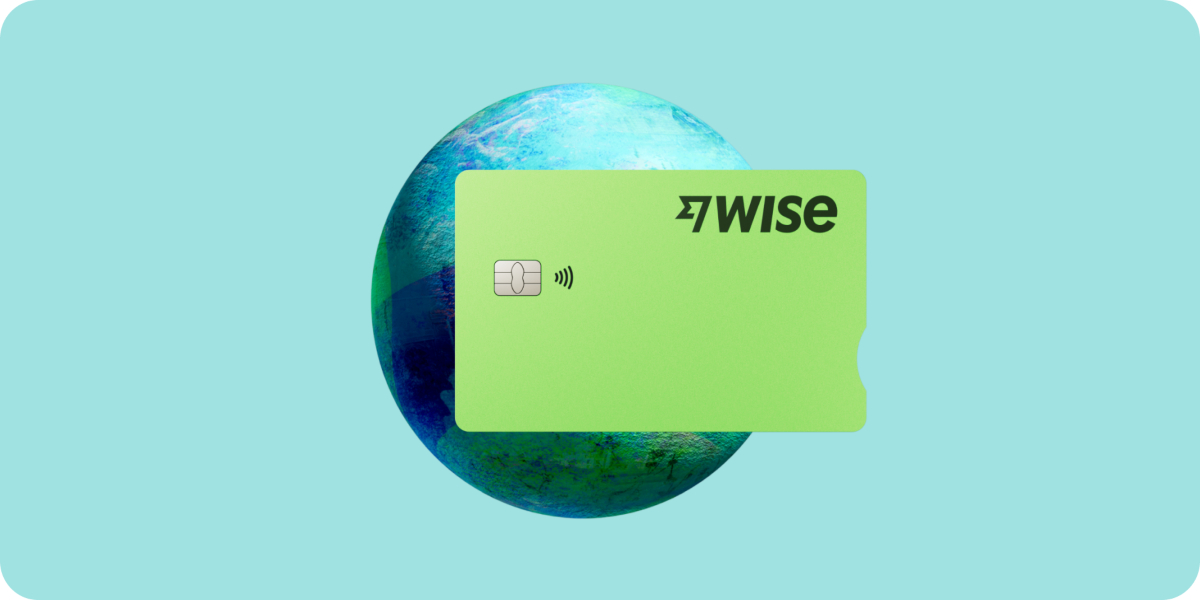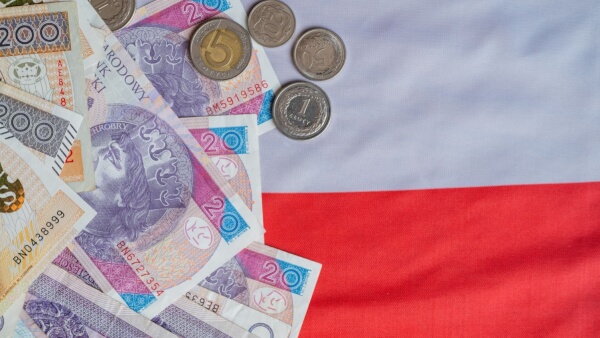Does Revolut work in Poland from Ireland?
Can you use your Irish Revolut account in Poland? And what are the fees you pay when doing that? Read here.

Planning a trip to Poland? Whether you want to explore the cobblestone streets of Krakow, experience the buzzing city of Warsaw, or marvel at historic sites like the Wieliczka Salt Mine, knowing what currency to bring can save you time, money and hassle on your journey.
In this guide we’ll cover whether Poland uses the euro, explore which payment methods are best, and explain how a Wise card can help you spend while you’re abroad.
Pay directly in Polish zloty
with the Wise card 💳

Poland is a member of the European Union, but hasn’t adopted the euro as their official currency yet. Instead, they use the Polish złoty (zł), which can be abbreviated to PLN.¹
In its current form, the Polish złoty has been in use since 1995 when the country underwent a redenomination process post-communism. The currency is divided into złoty and groszy, with 100 groszy being worth one złoty.
Both coins and banknotes are in circulation, with the following denominations currently available:
- Grosky coins: 1 gr, 2 gr, 5 gr, 10 gr, 20 gr, 50 gr
- Złoty coins: 1 zł, 2 zł, 5 zł
- Złoty notes: 10 zł, 20 zł, 50 zł, 100 zł, 200 zł, 500 zł
The notes and coins come in different sizes with tactile marks to help distinguish them.
While Polish złoty is the official currency, some hotels, tourist attractions or shops in tourist-heavy areas may accept euro, especially if they’re near the airport or border.
If you find a business that does accept euros, it is a good idea to check the fees and exchange rates associated with doing this. Expect it to be more expensive than if you were to pay in złoty, and that any change you receive will be in the local currency.
When travelling in Poland the best practice is to pay in the local currency to get the most value for your money. If you pay in euros, you have to navigate the potential pitfalls associated with fees and poor exchange rates.
This is especially true when you select a Dynamic Currency Conversion (DDC) in a point of sale or ATM. DDC allows you to pay in euros but it uses the merchant or ATM’s exchange rate, which generally isn’t favourable, and different from the mid-market rate.
So, you should always select the local currency (Polish złoty) when making payments, and your home bank or provider will do the conversion for you.
If you have euro cash that you want to exchange for Polish złoty, you could do this at a bank or a kantor; kantor is the Polish term for a currency exchange office. When dealing with currency exchangers it’s always a good idea to compare their rate to the mid-market rate, to check for any hidden margin.

If you don't want to worry about getting in line to exchange your money and also want transparent exchange rates, the Wise card might be your best travel companion.
This card is connected to the Wise Account (a multi-currency account), and for a one time fee of 7 EUR, you get access to a debit card that allows you to:
- Spend in +40 currencies (including Polish zloty) from your account balances. If you're paying in the currency you have in your account it means that there are no currency conversions needed, and there are no spending fees.
- Don't have enough money in the local currency? No problem. Thanks to the Smart Conversion technology, money will be automatically deducted from the balance where the exchange rate is the best.
- Withdraw money at ATMs abroad for free up to the monthly limit*
- Create free virtual cards and add them to mobile wallets like Apple Pay.
- Get your money converted always at the mid-market exchange rate.
Open your Wise Account
for free 🚀
Poland is a card friendly destination, with credit cards and debit cards being widely accepted by businesses, including for contactless payments. Two of the most common payment networks are Visa and Mastercard, which is the same as Ireland.
When travelling it can also pay to have a small amount of cash on hand, just in case you need to pay a taxi, food vendor or a business that’s unable to process card payments.
The Wise card shines here as a versatile option, allowing you to pay by card for most transactions while also withdrawing small amounts of złoty from ATMs when needed, all at low cost.
* You get 2 free withdrawals per month, up to 200 EUR. For amounts over 200 EUR, a 1.75% fee applies to the excess. After your two free withdrawals, each additional withdrawal costs 0.5 EUR. Wise will not charge you for these withdrawals, but some additional charges may occur from independent ATM networks.
Sources used:
Sources last checked on date: 23 July 2025
*Please see terms of use and product availability for your region or visit Wise fees and pricing for the most up to date pricing and fee information.
This publication is provided for general information purposes and does not constitute legal, tax or other professional advice from Wise Payments Limited or its subsidiaries and its affiliates, and it is not intended as a substitute for obtaining advice from a financial advisor or any other professional.
We make no representations, warranties or guarantees, whether expressed or implied, that the content in the publication is accurate, complete or up to date.

Can you use your Irish Revolut account in Poland? And what are the fees you pay when doing that? Read here.